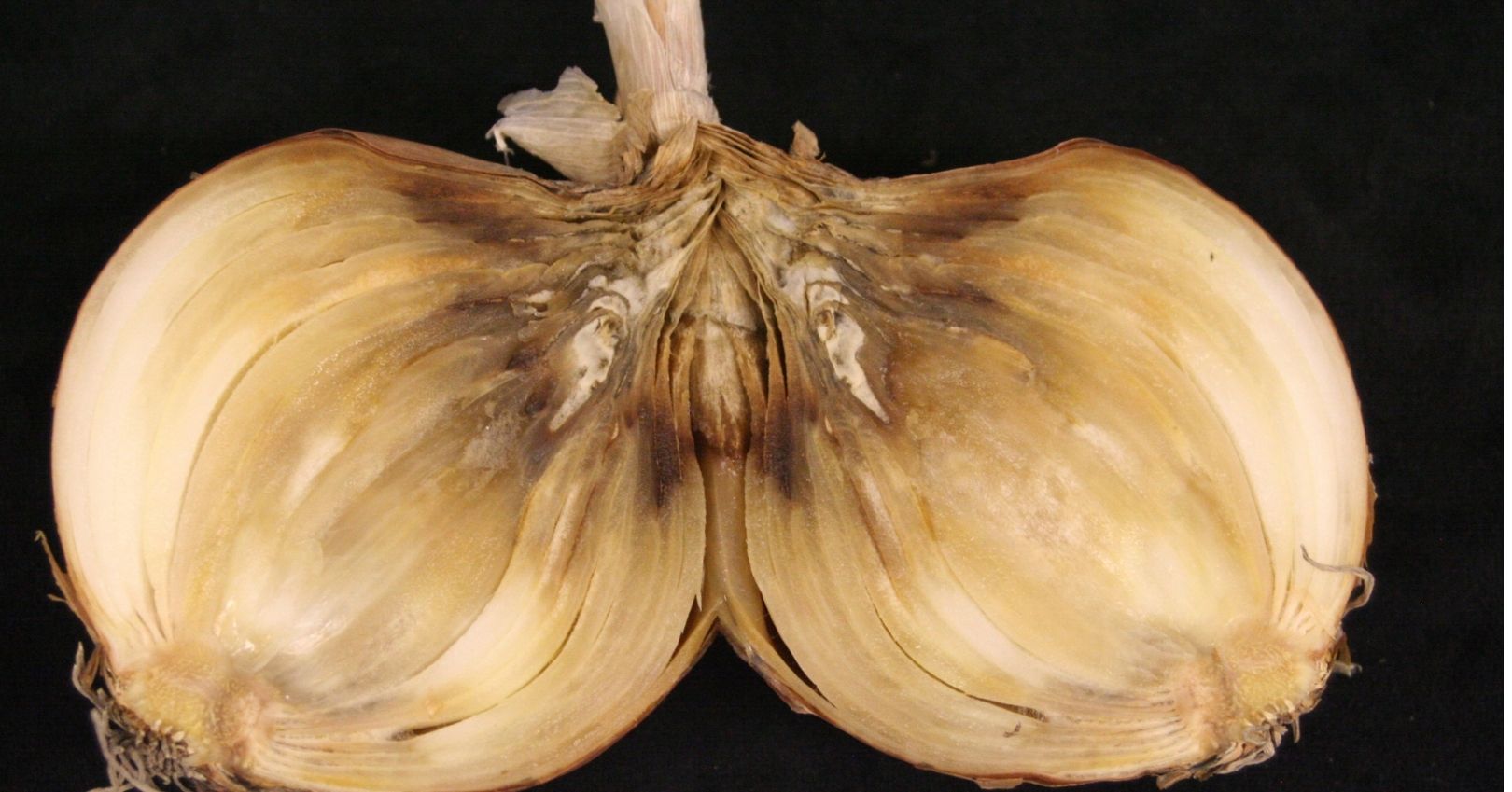Botrytis Neck Rot


Casual Agents
Botrytis aclada and Botrytis allii cause postharvest storage disease. Severe infections can lead to over 60% loss.
Symptoms
The first symptoms of botrytis neck rot are seen in the neck area during storage. The neck may appear sunken and scales may have a water-soaked appearance that turn gray to dark brown. Over time, the decay will move through the entire bulb. Sometimes white to gray mycelium can be seen developing between scales.
Symptoms
The first symptoms of botrytis neck rot are seen in the neck area during storage. The neck may appear sunken and scales may have a water-soaked appearance that turn gray to dark brown. Over time, the decay will move through the entire bulb. Sometimes white to gray mycelium can be seen developing between scales.
Adult: Larger than the green peach and melon aphids, 0.08-0.16 inch (2-4 mm) long with pink or green bodies.
Egg: Similar to green peach and melon aphid eggs.
Nymph: Similar color and shape as adults, but smaller.
Management
- Store onions with dry, well cured necks. The fungus is unable to penetrate and infect a dry neck.
- Ensure proper curing. Proper curing can be achieved by undercutting onions at maturity, severing all roots, refraining from applying any nitrogen fertilizer once bulbs have been initiated, and planting at the correct plant density in the field. If it is difficult to dry onions due to environmental conditions, forced air (93°F) at 0.06 m3 per minute per 0.03 m3 of bulbs can reduce losses to neck rot.
- Maintain proper storage conditions. The best storage conditions include air movement, temperatures between 33-34°F, and 70-75% relative humidity. Air movement must be monitored to avoid condensation on bulbs

